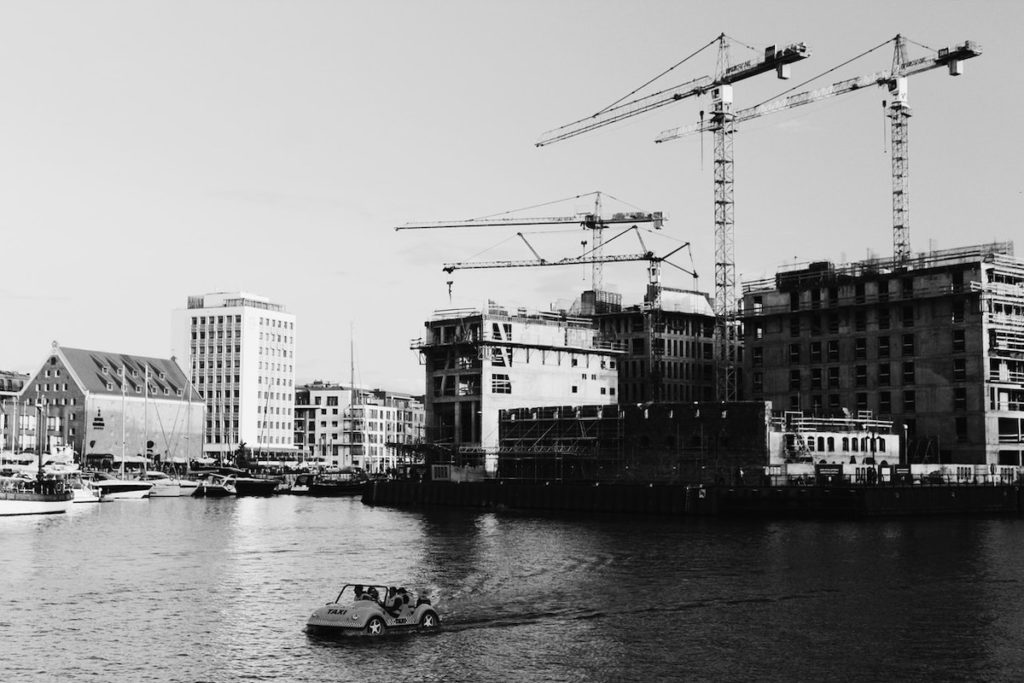Tasmanian builders are cautioning the lack of skilled workers prepared to work on major building projects proposed in the south east of the nation.
The Master Builders Association (MBA) is putting pressure on the State Government to take action, stating tens of thousands of employees will be required for the nearing of a predicted building boom.
The favourable prognosis comes after years of challenging times with construction approvals decreasing.
The construction sector has been in continuous decline since 2011 however, Tasmania has a great deal of construction work coming and apprentices are required.
If you consider the Hobart skyline and the Hobart luxury accommodation scene, you will find four tower cranes going up today so there is a great deal of people going into commercial occupations, so there is much more residential and tourism work with expensive housing and waterfront accomodation being built.
There is no doubt that the Australian crane industry, led by metropolitan development is currently in recovery mode. The rejuvenation and growth of Australia’s towns and infrastructure continues unabated, spurring demand for tower cranes, all terrains and frannas (franna cranes).
For Australia’s crane hire employers, the working environment and industry tendencies remains hugely challenging. Unpredictable road and traffic regulations from state to state, gigantic paperwork/administrative requirements from local governments and builders, progressively suitably skilled labour shortages, stationary crane hire prices and demanding crane testing demands, all contribute to the challenges of conducting a workable crane hire company in the current construction landscape.
Luckily, some headway has been made, albeit slowly. A number of successful initiatives recently introduced by the Crane Industry Council of Aust
ralia (CICA) trade institution are being warmly welcomed from within the crane hire market sector.
Over the last thirty years CICA has turned to a more-cohesive and beneficial business. In part that is due to this unification of what had been largely-independent state institutions into country branches of CICA, together with all the Western Australia branch linking in 2017.
As in much of the western world, wellbeing, health and safety-related problems have dramatically increased the costs and time needed to conduct business. Traffic management is now a massive industry employing hundreds of thousands and costing hundreds of millions of dollars. Construction site inductions are a significant time-consuming expense for the business.
A significant breakthrough has been made in addressing Australia’s crane testing demands that had been threatening to strangle the crane hire industry into submission. CICA’s most recent position report on important inspections was universally-praised.
Another frustrating problem that continues is the complete lack of uniformity in interpretation of security and work-health requirements amongst builders as well as their safety officers. This issue is exacerbated by the rising skilled labour shortages in Australia.
Crane leasers are suffering the effect of this not just in issues with recruiting and keeping crane operators and technicians, but also in rising wages and the everyday frustrations they have problems with in handling inexperienced builder’s and employees.
Since the 2011 summit when more than two hundred original all-terrain cranes were purchased, by last year the Australian market demand had diminished year-by- year to a quarter of the pinnacle.
Fortunately, the decrease was comprehensively-reversed with earnings last year doubling and easily exceeding 100 brand new ATs sent by the New Year. Concerning size classes, the most powerful recoveries are seen from the 55-to-60t three-axle classes (doubled in comparison to 2016), 200-to-250t five-axle course (tripled from 2016); and 90-to-100t four-axle classes (nearly doubled) while need for new 150t five-axle ATs has strongly rebounded thanks in big part to the allure of fresh products.
Along with the new Australian Standard AS 2550.5-2016 the new regime corrects the threshold requiring ten-year crane reviews and it also wisely recommends following the manufacturer’s guidelines that have been identified as a consequence of conducting the CraneSafe review.
An initiative that it attempting to be developed is to present the crane hire business to college and school students and finally put money into industry-entry training.
The majority of the action is approximately Sydney, Melbourne and Brisbane, with Sydney including 16 cranes to get a total of 350, Melbourne incorporating five for 151 and Brisbane incorporating four to 85.
The gains come despite forecasts of a recession since the high-rise residential business comes off a summit. Back in September 2016 RLB estimated that a current 528 cranes were functioning on flat blocks in Sydney, Melbourne and Brisbane.
This they compared to 429 tower cranes operating from the Significant North American cities of Boston, New York, Chicago, San Francisco, Los Angeles, Toronto and Calgary.
The boom in residential building was driven mostly by a surge in buildings with more than four stories. But, 2017 may wind up being the summit.





